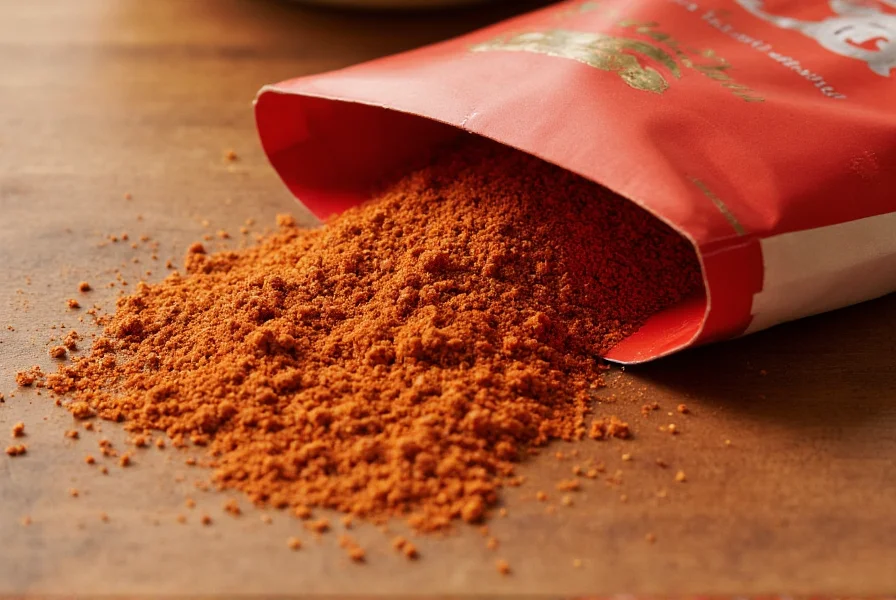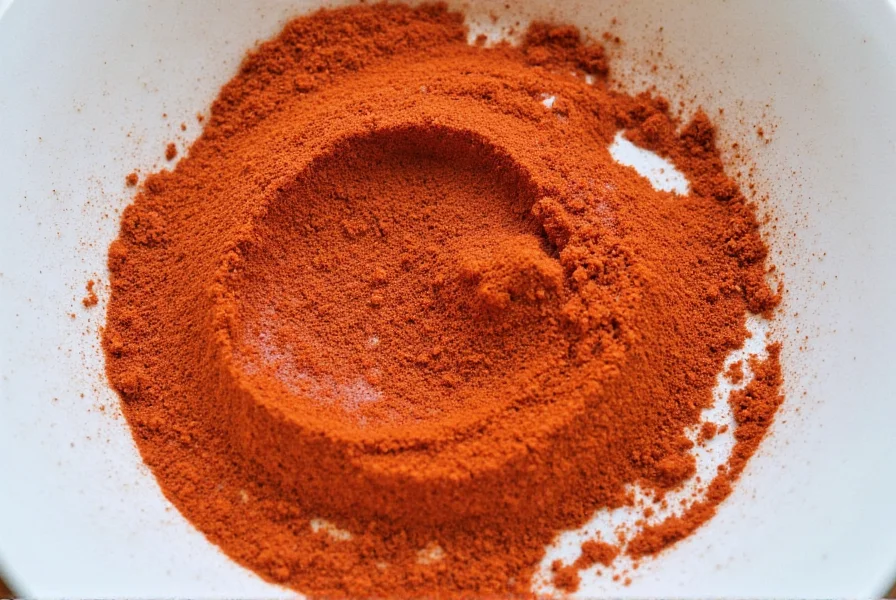
Understanding Commercial Chili Spice Blends
Chili spice packets represent one of the most convenient shortcuts for home cooks preparing traditional chili dishes. These pre-measured seasoning mixes eliminate the need to purchase and measure multiple individual spices. While formulations vary by brand, most contain between 5-8 core ingredients designed to create that distinctive southwestern flavor profile.
The standard composition typically includes:
- Chili powder (the base, usually 40-60% of the blend)
- Ground cumin (15-25% for earthy depth)
- Garlic powder (5-10% for savory notes)
- Onion powder (5-10% for sweetness)
- Dried oregano (2-5% for herbal complexity)
- Salt (10-20% in most commercial blends)
- Paprika (5-10% for color and mild sweetness)
Decoding Ingredient Lists
When examining chili spice packet ingredients list labels, watch for several key elements that affect quality. Premium blends list only spices and salt without fillers, while economy versions often contain cornstarch, maltodextrin, or silicon dioxide as anti-caking agents. Some brands add sugar or monosodium glutamate (MSG) for enhanced flavor, which may concern health-conscious cooks.
The ratio of ingredients significantly impacts the final flavor. Authentic Texas-style blends emphasize chili powder and cumin with minimal oregano, while Cincinnati-style versions incorporate more paprika and sometimes cocoa powder. Understanding these regional variations helps select the right chili powder vs chili spice packet for your recipe.
| Common Additives | Purpose | Quality Indicator |
|---|---|---|
| Cornstarch | Thickening agent | Lower quality blend |
| Silicon Dioxide | Prevents caking | Common in commercial blends |
| Maltodextrin | Bulk filler | Reduced spice intensity |
| MSG | Flavor enhancer | Personal preference |
Practical Applications Beyond Traditional Chili
While designed for chili con carne, these seasoning packets offer versatile applications across multiple dishes. The how to use chili seasoning packets extends far beyond their intended purpose:
- Taco seasoning - Use 2 tablespoons per pound of meat with minor cumin adjustment
- Southwestern rubs - Combine with brown sugar for chicken or pork
- Soups and stews - Enhance vegetable or bean soups with 1-2 tablespoons
- Marinades - Mix with oil and lime juice for flavorful meat preparations
- Roasted vegetables - Toss with potatoes or sweet potatoes before roasting
Chefs often modify commercial blends by adding smoked paprika for depth or a pinch of cayenne for increased heat. This customization transforms a basic chili spice packet into a versatile kitchen staple.
Creating Superior Homemade Alternatives
For those seeking better control over ingredients and flavor profiles, a homemade chili spice blend recipe offers significant advantages. The basic formula provides consistent results while allowing customization for dietary needs or personal taste preferences.
Basic homemade blend (yields ¼ cup):
- 2 tablespoons chili powder
- 1½ tablespoons ground cumin
- 1 tablespoon garlic powder
- 1 tablespoon onion powder
- 1½ teaspoons dried oregano
- 1 teaspoon paprika
- ½ teaspoon cayenne (optional for heat)
- 1½ teaspoons salt (adjust to preference)
Mix thoroughly and store in an airtight container. This make your own chili seasoning mix approach eliminates fillers while providing fresher, more vibrant flavors than most commercial packets. For gluten-free chili spice packet options, simply verify all individual spice components are certified gluten-free.
Substitutions and Modifications
When you need a best substitute for chili spice packet, several alternatives work effectively. The simplest approach combines equal parts chili powder and cumin with smaller amounts of garlic powder, onion powder, and oregano. For immediate needs, taco seasoning makes an acceptable stand-in with minor adjustments.
To modify heat levels in your chili spice mix:
- Mild version - Reduce or eliminate cayenne, increase paprika
- Medium heat - Standard recipe with ½ teaspoon cayenne
- Extra hot - Add 1 teaspoon cayenne or ½ teaspoon crushed red pepper
Understanding how to adjust these elements transforms a simple seasoning mix into a customizable flavor foundation for numerous dishes.
Storage and Shelf Life Considerations
Proper storage significantly impacts how long your spices maintain optimal flavor. Commercial chili spice packets typically remain potent for 18-24 months when unopened and stored in cool, dark conditions. Once opened, transfer contents to an airtight container to prevent moisture absorption.
Homemade blends maintain peak freshness for 6-8 months when stored properly. Signs your chili spice packets have degraded include:
- Faded color (spices should remain vibrant)
- Weak aroma (fresh spices have strong scent)
- Clumping (indicates moisture exposure)
- Stale or cardboard-like taste
For extended shelf life, store in the freezer in airtight containers. This preserves volatile oils that provide characteristic flavors and aromas.
Frequently Asked Questions
What's the difference between chili powder and chili spice packet?
Chili powder is a single ingredient made from ground dried chilies, while a chili spice packet contains a blend of multiple spices including chili powder, cumin, garlic powder, onion powder, and oregano. The packet provides a complete seasoning mix, whereas chili powder alone requires additional spices for proper chili flavor.
Can I make chili without a spice packet?
Yes, you can easily make chili without a spice packet by combining 2 tablespoons chili powder, 1 tablespoon cumin, 1 teaspoon garlic powder, 1 teaspoon onion powder, and ½ teaspoon oregano per pound of meat. This homemade chili spice blend recipe gives you better control over ingredients and flavor intensity.
How can I adjust the heat level in chili spice packets?
To increase heat, add cayenne pepper (¼ teaspoon at a time) or crushed red pepper flakes. For milder flavor, reduce the packet amount by 25-50% and supplement with additional paprika or cumin. Remember that heat perception varies by individual, so adjust gradually while tasting.
Are most chili spice packets gluten-free?
Most basic chili spice packets are naturally gluten-free, but some economy brands add cornstarch or maltodextrin as fillers, which may be derived from wheat. Always check labels for gluten-free chili spice packet options if you have sensitivities. Homemade blends provide the safest option for strict gluten-free requirements.
How long do chili spice packets last after opening?
Commercial chili spice packets maintain optimal flavor for 6-12 months after opening when stored properly in a cool, dark place. Transfer contents to an airtight container immediately after opening to prevent moisture absorption and flavor degradation. For longest shelf life, store in the freezer.











 浙公网安备
33010002000092号
浙公网安备
33010002000092号 浙B2-20120091-4
浙B2-20120091-4